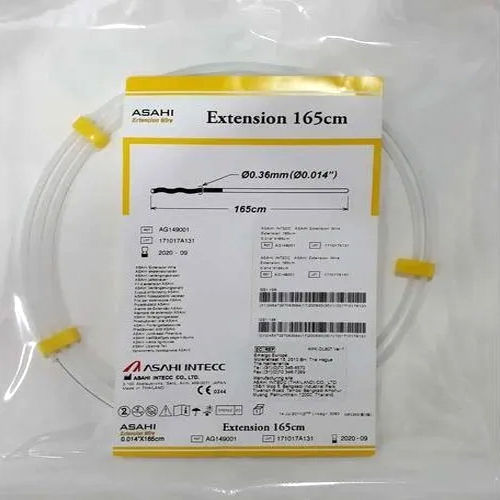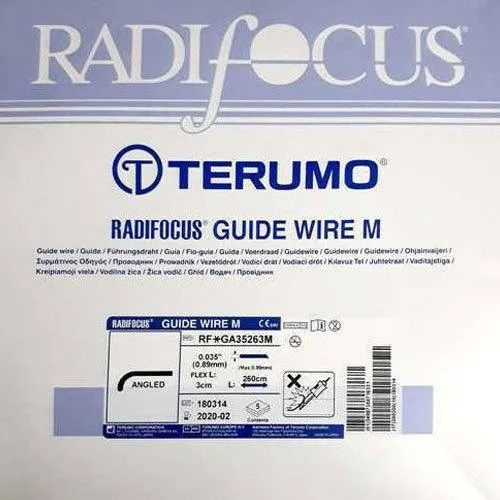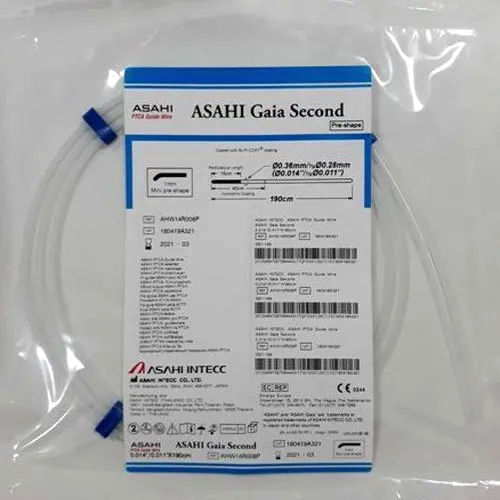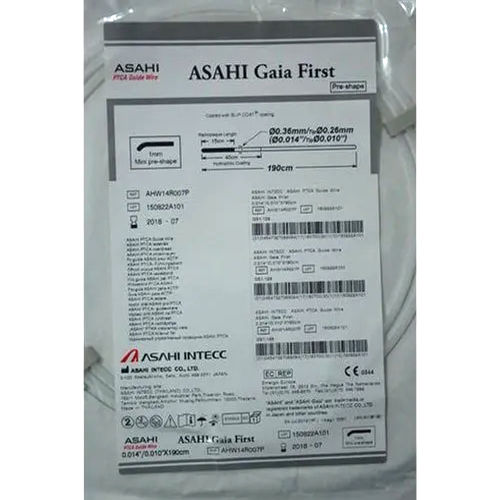Asahi Extension 165 Cm Guide Wire
Product Details:
Asahi Extension 165 Cm Guide Wire Price And Quantity
- 4000 INR/Piece
- 10 Piece
Asahi Extension 165 Cm Guide Wire Trade Information
- Cash Advance (CA)
- 10000 Piece Per Week
- 4 Days
- All India
Product Description
Typically, a 165 cm guide wire is a medical instrument used in a variety of surgical, interventional radiology, and cardiology procedures. In order to offer access and guidance for the implantation of catheters, stents, or other medical tools, guide wires are small, flexible wires that are introduced into blood vessels or other anatomical structures.
In this instance, the guide wire is 165 cm long, or 165 centimetres in length. The reach and accessibility within the body during the process are determined by the guide wire's length, which is crucial. Guide wires may need to be different lengths for different procedures in order to accommodate the particular anatomical features involved.
Product details
|
Diameter |
00.36mm(00.14") |
|
Length |
165 cm |
|
Brand |
Asahi |
|
Item Code |
REFAG149001 |
|
Material |
PTCA |
|
Model Name/Number |
Extension 165 Cm |
|
Automation Grade |
Manual |
|
Packaging Type |
Packet |
Frequently Asked Questions
Q: A 165-centimetre guide wire is what?
A: Catheterization and endovascular surgeries both employ 165 cm guide wires as part of their minimally invasive techniques. It is a long, thin, flexible wire constructed out of nitinol or stainless steel.
Q: What function does a guide wire serve?
A: A guide wire's main function during medical procedures is to support and direct the patient. It facilitates movement via blood vessels or other body passageways, enabling the insertion and positioning of additional medical tools or devices.
Q: How are guide wires utilised?
A: Usually, a minor incision or a bodily opening allows for the insertion of a guide wire. Under the supervision of imaging methods like fluoroscopy or ultrasound, it is carefully threaded through the desired artery or channel. Once installed, it creates a path for additional instruments or medical devices to travel along.
Q: Is a guide wire's length standardised?
A: No, a guide wire's length can change depending on the surgery, the patient's anatomy, and the manufacturer of the medical device. Between 150 and 300 cm is the typical range, with 165 cm being one of the alternatives.
Q: Are there any dangers or difficulties with employing a guide wire?
A: Guide wires are generally safe, although there may be dangers and issues. Vessel damage, perforation, embolism, infection, allergic responses, or problems resulting from the particular surgery being performed are a few examples. It's critical that healthcare staff receive training in proper usage and abide by the necessary safety precautions.







